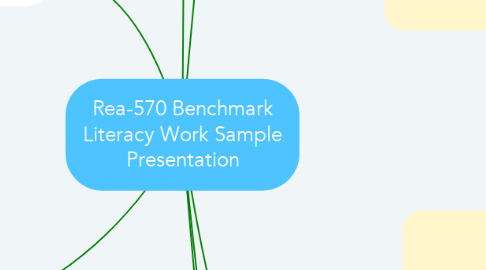
1. Nicholas Costarelli September 3, 2020
2. Resources:
2.1. Sitthitikul, P. (2018). Utilizing the QRI as a Diagnostic Assessment and Intervention Instruction: A Case of a Thai Learner. English Language Teaching, 11(7), 101-115.
2.2. Voogt, J. M., Pieters, J. M., & Handelzalts, A. (2016). Teacher collaboration in curriculum design teams: effects, mechanisms, and conditions. Educational Research and Evaluation, 22(3-4), 121-140.
2.3. van Geel, M., Keuning, T., Frèrejean, J., Dolmans, D., van Merriënboer, J., & Visscher, A. J. (2019). Capturing the complexity of differentiated instruction. School effectiveness and school improvement, 30(1), 51-67.
2.4. Gipe, Joan P., and Janet C. Richards. Multiple Paths to Literacy: Assessment and Differentiated Instruction for Diverse Learners, K-12. Pearson, 2019.
3. 4
3.1. Self-Reflection Process
3.1.1. It is important to remember that analytical teaching started from the beginning of the intervention by observing the students. It then continued when revisions were made based off of further observation. Following the intervention process is where it was important to Self-Reflect by Analytically Questioning all the areas of the intervention. The answers to these questions were difficult to answer because they required a humbling of one’s self in order to truly see their faults. This will lead to the creation of better interventions. By evaluating the quality of the intervention, "Feedback provided," about the instructional sequence completed will help the teacher, "Decide whether the lesson was effective" (Gipe., et al, 2019).
4. 2
4.1. Collaboration in Intervention Design
4.1.1. The importance of working with a mentor is extremely beneficial for the professional development of one’s self. The process of working with a mentor to create this intervention was important because, "Collaborative design positively affects both professional development and curriculum implementation"(Voogt., et al, 2016). It was agreed that a structure to each lesson match the individual personalities observed prior to the creation of each intervention. Furthermore, when collaborative revisions were made for each student's intervention it was important to look at which strategies were and were not working for the students.
4.2. Collaboration in Intervention Assessment
4.2.1. Figuring out what to use as assessment data was difficult due to the fact that time working with students was limited. Collaboration on what type of QRI would be given to the students was important because there had to be an agreed upon assessment that would provide valuable data that could be properly analysed. It was agreed that the the QRI given would have to provide, " Diagnostic information about the conditions under which students can identify words" (Sitthitiku, 2018). There was already observed comprehension issues so it would be important to figure out where students were struggling with sight and sound recognition. The strength of using a QRI Assessment is that they "Provide several assessment options depending on the use" (Sitthitiku, 2018).
5. Objectives
6. 1
6.1. LWS Sections Overview
6.1.1. The LWS Process included the creation of a three day reading intervention plan that was set up for three students in the classroom with varying levels. Working with a mentor there was different steps to creating the intervention plan over its implementation.
6.1.1.1. Week 1
6.1.1.1.1. During week one working with a mentor three students with varying abilities were observed for different educational, behavioural, and social emotional aspects. Following the observations and Informal QRI was given to each student and the data produced was thoroughly analysed
6.1.1.2. Week 2
6.1.1.2.1. During week two with a mentor the data collected and analysed in the previous week was used to create three days of intervention plans for each of the observed and assessed students.
6.1.1.3. Week 3
6.1.1.3.1. During week three with a mentor there was revisions made to the intervention plan following the implementation of the first day of intervention with the students. Using new data produced from the experience that occurred helped us to readjust our approaches if necessary.
6.1.1.4. Week 4
6.1.1.4.1. During week four with a mentor there was further revisions made to the intervention plan following the implementation of the second revised day of intervention with the students. Once again the new data produced was helpful in creating adjusted approaches with the individual interventions.
6.1.1.5. Week 5
6.1.1.5.1. Week five was adjusted due to the current circumstances. Finally, with a mentor self-analysis questions were created that were broad and vague enough to be used for future interventions, but were also specific enough to use with the intervention plans we created.
6.1.1.6. SStudent 1
7. 3
7.1. Intervention Differentiation
7.1.1. Naturally, aspects of classroom lesson should be different to meet the needs of every student in the classroom. With this in mind we need to make sure that our interventions are differentiated to ensure we are using our and the student’s limited time to the highest potential. Differentiated lessons or interventions are, “An approach by which teaching is varied and adapted to match students," needs (van Geel., et al, 2019). When we think of it in this manner the process of creating an intervention is already differentiated because it is bespoke to the individual student. The use of an Informal QRI to produce quality data that can be used to create individual interventions is truly tailoring small segments of learning time to the exact needs of the individual student.

